On April 22, people all over the world celebrate Earth Day by putting aside time to appreciate and protect the beautiful planet we call home. It’s also a time to reflect on our impact on the Earth and the Earth’s impact on us. This year, we mark the holiday by highlighting examples of people who acknowledge this two-way impact, working alongside NOAA Education to engage in acts of stewardship that serve both the environment and their communities.
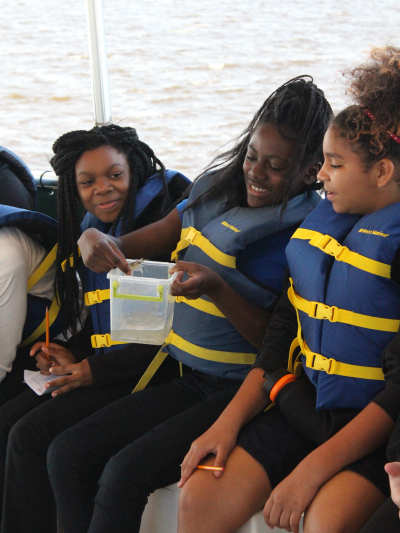
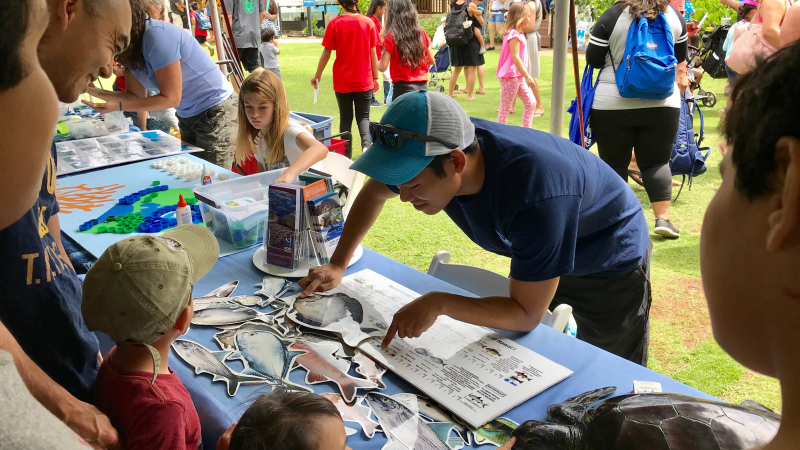
Thousands of people flocked to Waikiki Aquarium in Honolulu, Hawaii, for their annual Earth Day celebration. This event used hands-on learning experiences to teach guests about preserving and protecting Hawaii’s land from mauka to makai (from the mountaintops to the ocean). Keith Kamikawa, a Hawaii fishery extension agent with the NOAA Habitat Conservation Division, taught visitors which fish are legal to take home and which ones to release so that the fish gets the chance to mature, produce offspring, and ensure healthy fisheries for future generations. Remember: let the small fish go so they can grow! (Peggy Foreman/NOAA)
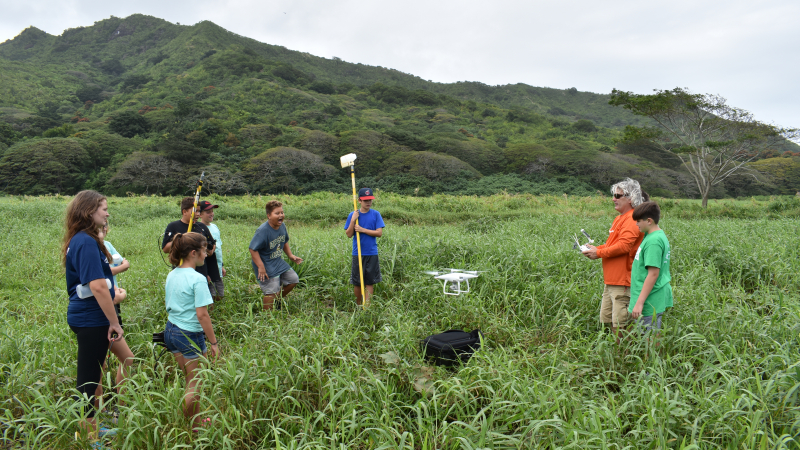
Kaohao Public Charter School students react to the launch of an Unmanned Aerial Vehicle (UAV) that the students are using to map the Kawainui Marsh in Kailua, Hawaii. After they collect the map generated from the UAV’s flight, the students will trek through the marsh themselves to ground truth the map and align their collected water quality samples with it. This project is part of the Watershed Investigations, Research, Education, and Design (WIRED) Project offsite link, run by the Pacific American Foundation and funded through a NOAA B-WET grant. (Jim Foley/NOAA)
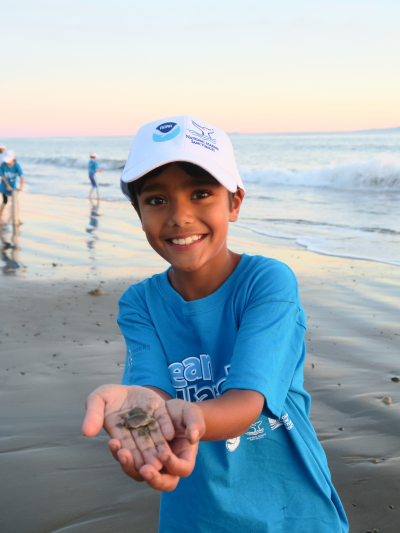
Dillon M., a student at Adams Elementary School in California, shows off a sand crab he found while monitoring a local Santa Barbara beach. As part of NOAA’s Ocean Guardian School program, Adams Elementary students work locally to better understand and protect the ocean. Last year, these students systematically counted the number of Pacific mole crabs in an area of the shoreline, using these numbers as an indicator of beach health through the Long-term Monitoring Program and Experiential Training for Students offsite link (LiMPETS) program. (Claire Fackler/NOAA)
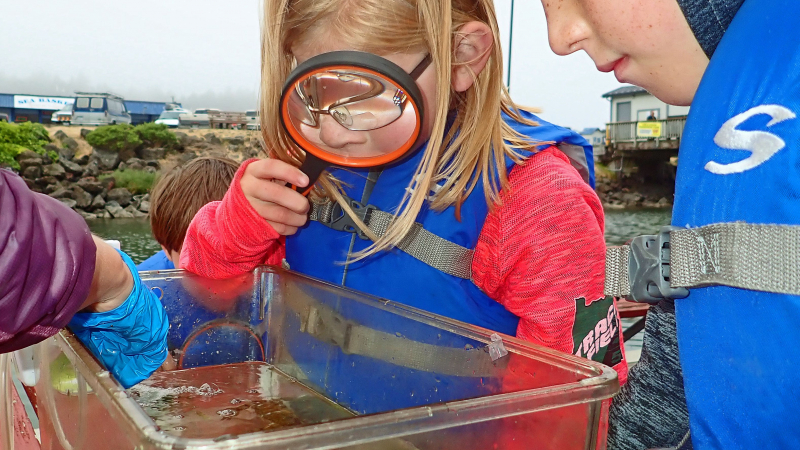
At summer science camp, Heidi gets a close-up look at what lives along the floating docks near the mouth of the South Slough estuary in Charleston, Oregon. Heidi, like many local kids, returns to science camp year after year; the dynamic nature of the estuary provides endless opportunities to learn, explore, and have fun. This children’s camp is just one of several engaging summer programs that fosters curiosity for the Earth amongst kids living near the South Slough National Estuarine Research Reserve on the southern Oregon coast. (Makinna Miles/Oregon Sea Grant)

Adams Elementary School third- through sixth-grade students take their love for the ocean far beyond their classroom walls. Students at this low-income school in Santa Barbara serve as NOAA Ocean Guardian Ambassadors, engaging in hands-on ocean science as well as teaching others about the ocean issues affecting their community. Recently, these ocean heroes have focused their efforts on reducing single-use plastic consumption. They visit local restaurants like this one (pictured) to encourage them to provide straws only if customers actively request them. (Claire Fackler/NOAA)
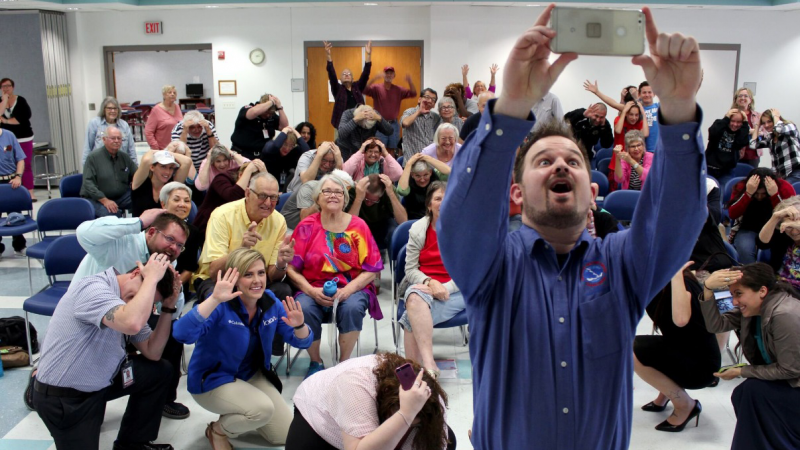
Meteorologist Trevor Boucher from the National Weather Service (NWS) office in Austin/San Antonio takes a #SafePlaceSelfie with members of the Austin Deaf Senior Citizens Club and the Texas School for the Deaf. In April of 2017, NWS Austin/San Antonio partnered with city and county organizations to host a town hall event for the local hearing loss population to learn about their weather-related needs. This event is part of a larger NWS effort to better serve people with hearing loss across the country and connect these communities with NOAA resources that help them stay safe from Earth’s powerful storms. (Trevor Boucher/NOAA)
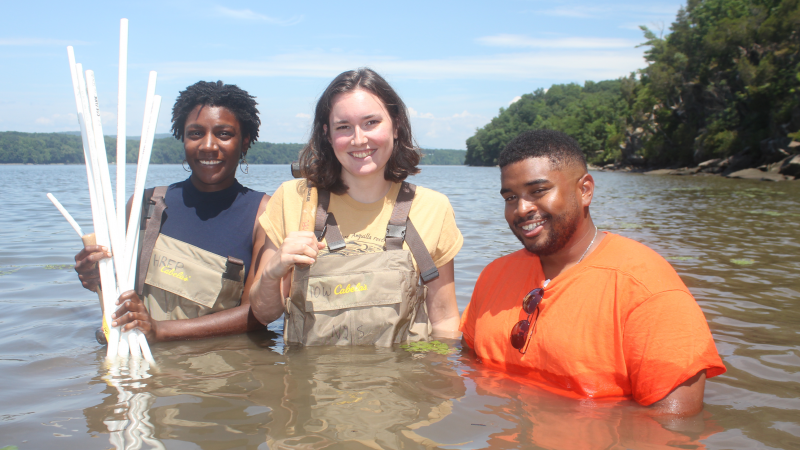
Ashawna Abbott, Aidan Mabey, and Martice Smith pose for a photo as they set up submerged aquatic vegetation plots in the Hudson River National Estuarine Research Reserve. These young professionals currently work to understand and protect the estuary through the Student Conservation Association, but their journeys with the reserve began in high school. Each of them participated in the reserve’s high school programs, either as volunteers or as student researchers. Now, they serve as mentors in the same classrooms and streams where it all began. (Chris Bowser/NOAA)

Amber Liggett, a 2016-2018 Ernest F. Hollings undergraduate scholarship recipient, interned with the National Weather Service’s (NWS) Office of Communications in 2017. Liggett focused on the external communication efforts of the NWS Silver Spring, Maryland, office, often creating materials that featured NWS mascot Owlie Skywarn (pictured with Liggett). Liggett helped people across the nation understand the impact that Earth processes have on communities through writing public service announcements and web materials on weather safety and preparedness. (Courtesy of Amber Liggett)

